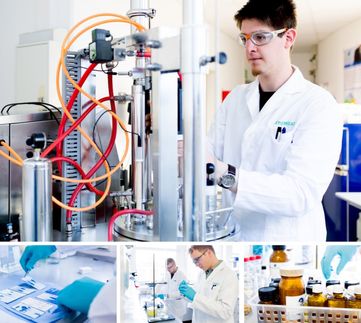BASF signs cooperation agreement with Solvias
BASF has signed a cooperation agreement with Solvias AG, Basel, Switzerland. Solvias is a leading global player in the development and marketing of asymmetric hydrogenation technologies and has one of the world's largest ligand libraries. In cooperation with Solvias, BASF will use these ligands to manufacture optically active intermediates for the life science industry.
"We continuously develop new intermediates using state of the art technologies. In selected cases, we engage in strategic partnerships to enhance our strong technology platform", Dr. Karin Sperling, BASF Director Global New Business Development Chemical Intermediates said. "The ligands provided by Solvias will allow us to act in response to more customer queries using the best technology in each individual case."
"As a contract research organization, we aspire to extensive and effective implementation of Solvias technologies in the pharmaceutical and specialty chemicals segments", Solvias CEO Hansjörg Walther said. "BASF plans to review and use our asymmetric homogeneous hydrogenation technology in the manufacture of a range of innovative optically active products. The strategic partnership with us allows BASF to implement the technology more rapidly on an industrial scale. Our focus on asymmetric hydrogenation with an industrial relevance and customer-specific licensing models for the use of chiral Solvias ligands is paying off. It's giving another manufacturing company access to an increasingly important technology".
Chiral intermediates of high optical purity play an important role in the life science industry. BASF markets an extensive and steadily growing portfolio of optically active products under the trade name ChiPros(TM). To offer customers an even larger range of products and have access to the most cost-effective route of synthesis in each case, BASF believes in maintaining an extensive technology platform. BASF therefore uses asymmetric hydrogenation as well as biocatalysis in the manufacture of optically active intermediates. This technology requires catalyst systems whose main components are chiral ligands.
Most read news
Other news from the department business & finance

Get the chemical industry in your inbox
By submitting this form you agree that LUMITOS AG will send you the newsletter(s) selected above by email. Your data will not be passed on to third parties. Your data will be stored and processed in accordance with our data protection regulations. LUMITOS may contact you by email for the purpose of advertising or market and opinion surveys. You can revoke your consent at any time without giving reasons to LUMITOS AG, Ernst-Augustin-Str. 2, 12489 Berlin, Germany or by e-mail at revoke@lumitos.com with effect for the future. In addition, each email contains a link to unsubscribe from the corresponding newsletter.
Most read news
More news from our other portals
See the theme worlds for related content
Topic world Synthesis
Chemical synthesis is at the heart of modern chemistry and enables the targeted production of molecules with specific properties. By combining starting materials in defined reaction conditions, chemists can create a wide range of compounds, from simple molecules to complex active ingredients.

Topic world Synthesis
Chemical synthesis is at the heart of modern chemistry and enables the targeted production of molecules with specific properties. By combining starting materials in defined reaction conditions, chemists can create a wide range of compounds, from simple molecules to complex active ingredients.
Last viewed contents

Revolutionary images of the birth of crystals - A team from the UNIGE has succeeded in visualizing crystal nucleation - the stage that precedes crystallization - that was invisible until now
Bayer amends Schering takeover offer - Acceptance period for Schering stockholders extended by two weeks

More comfortable and safer: new concept for chemical protective suits

Electronics integrated in plastic becomes more sustainable - Recyclability by Design



























































